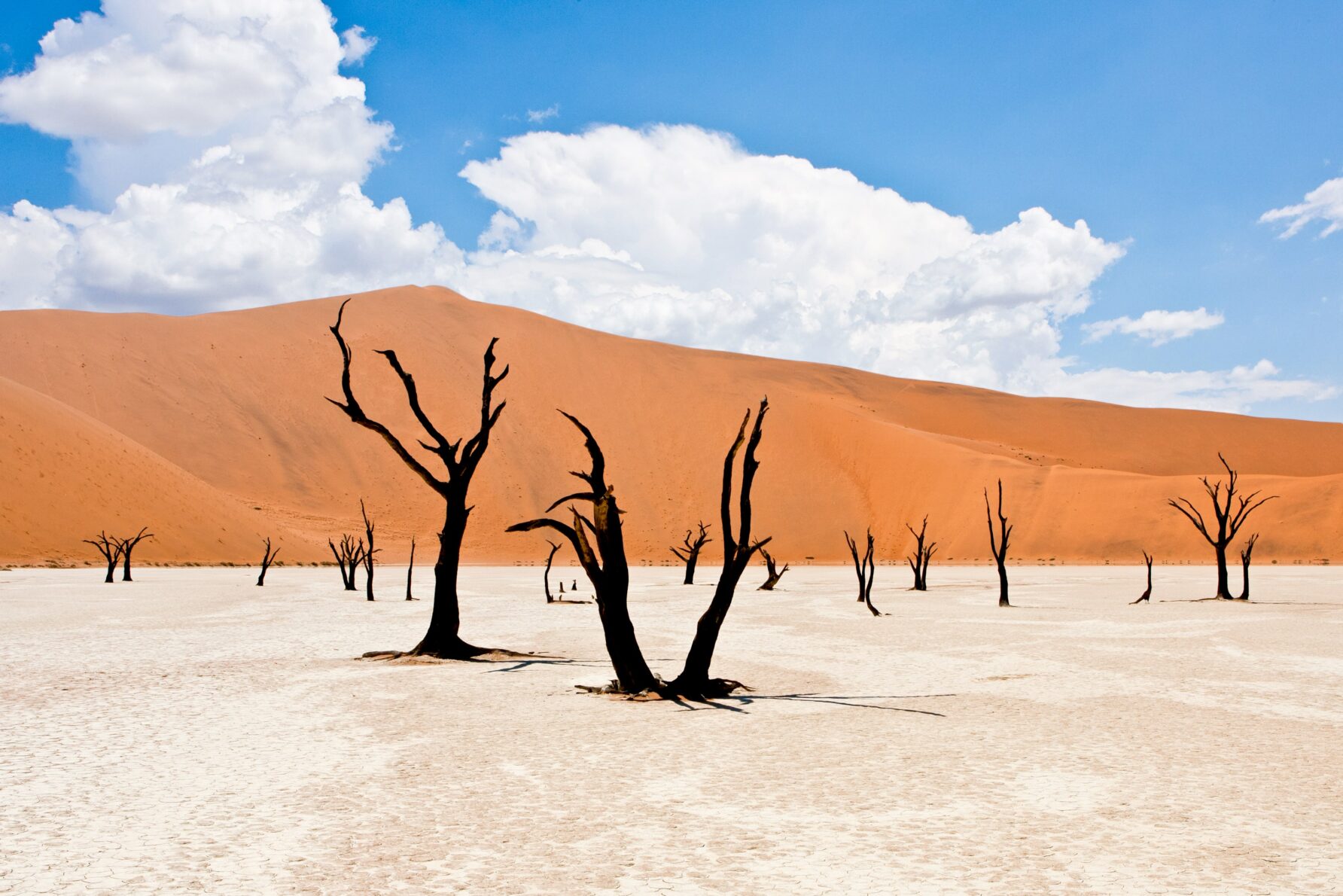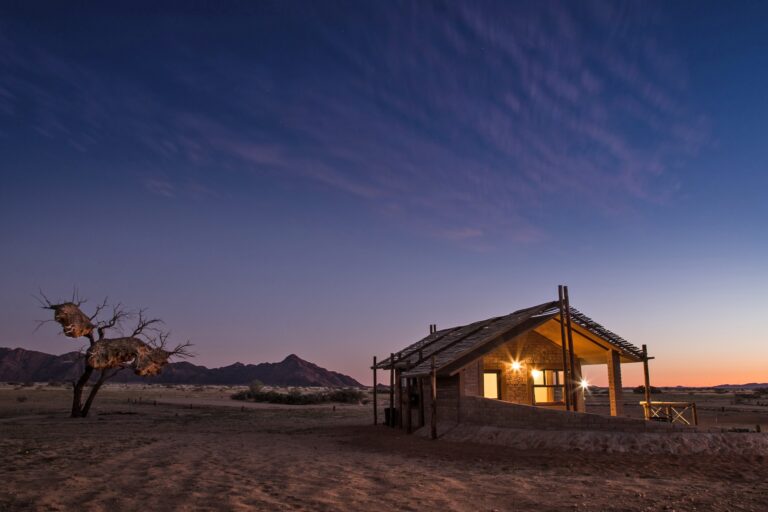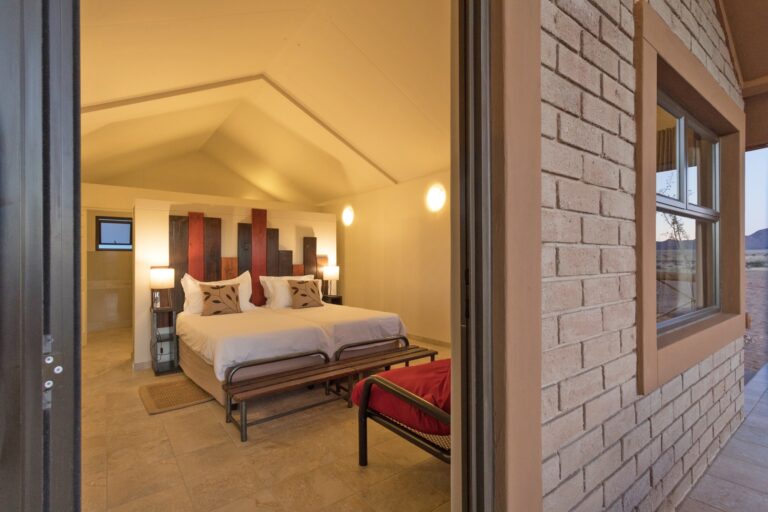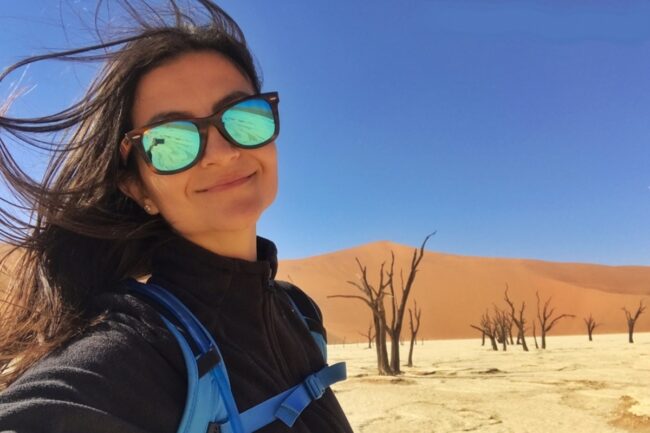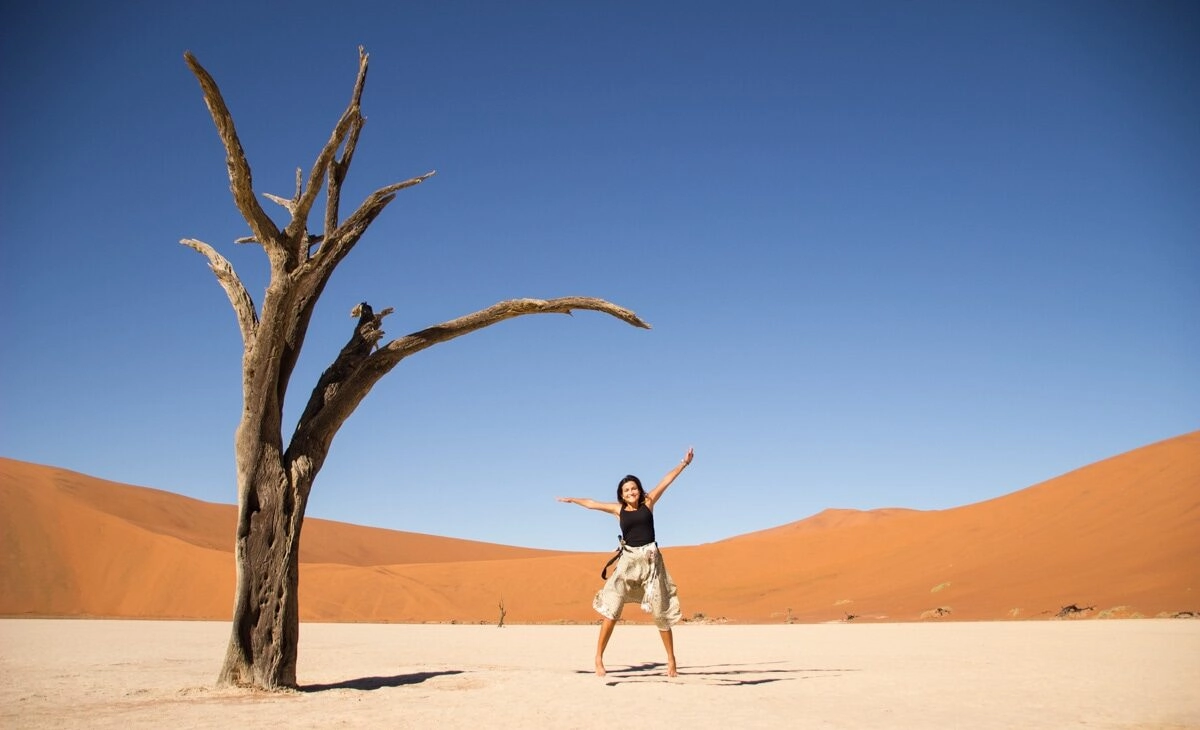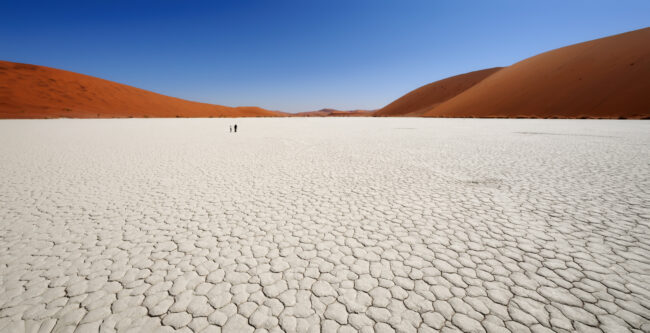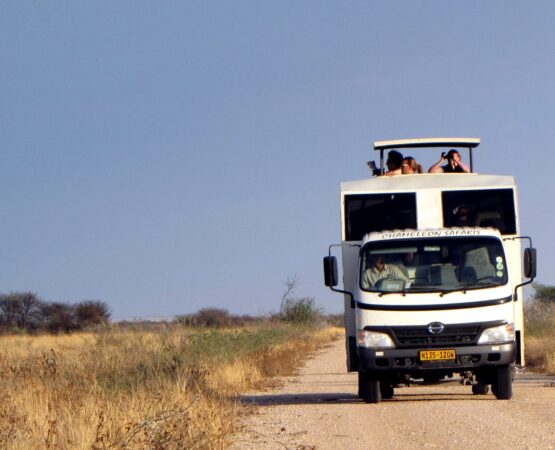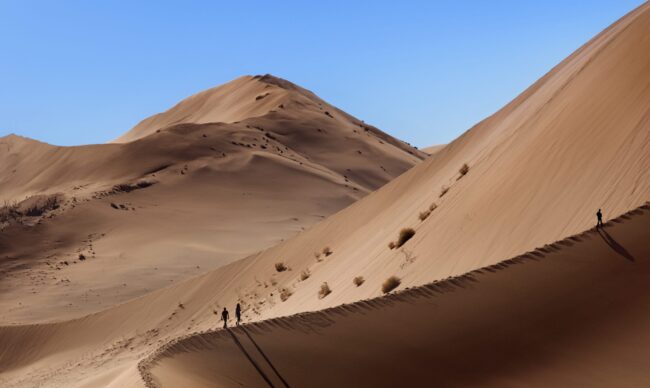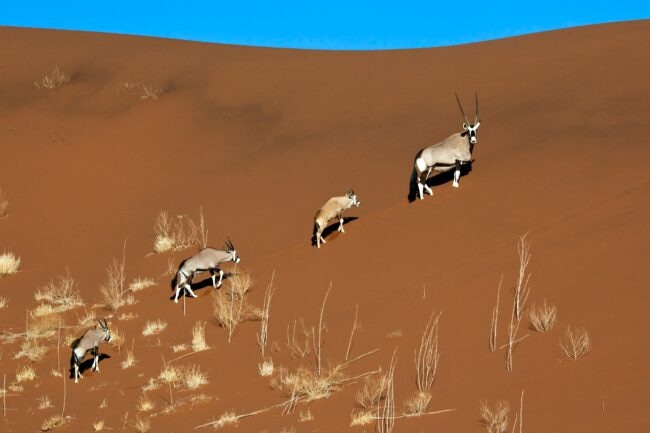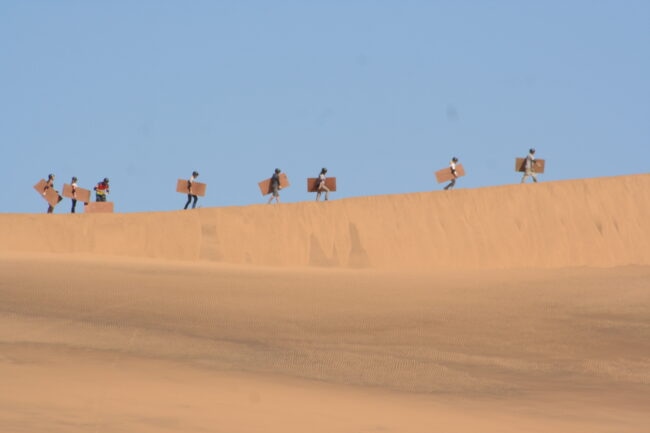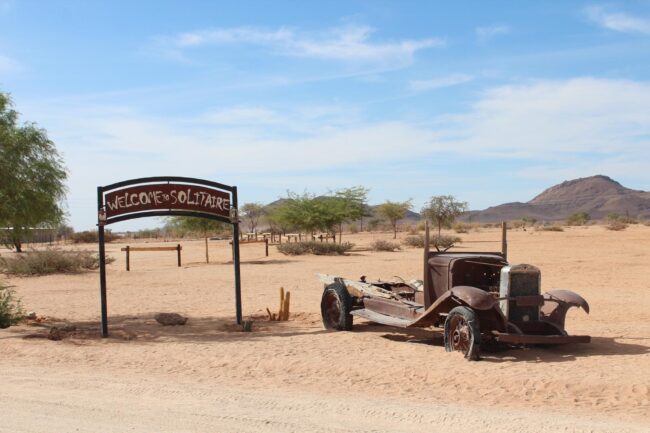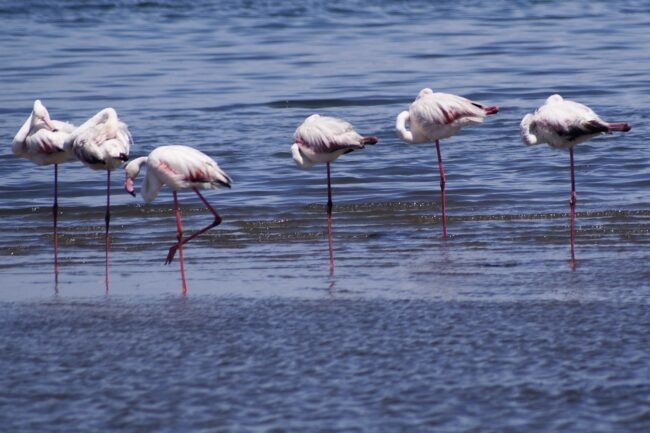What to Expect
- Flexibility is Key: Your itinerary should be used as a guide because, well, this is Africa! Expect changes due to the vast distances and evolving circumstances. Rest assured, every adjustment is made with the group’s best interests in mind.
- Accommodation Considerations: While we make every effort to stick to the accommodations listed, please note that they serve as guidelines, and adjustments may occur.
- Embrace Diversity: Get to know your fellow travellers! With a mix of ages, nationalities, and cultures, everyone has a unique story. Take this chance to connect and learn from one another.
- Pack Smart: Space inside the vehicle is limited, so leave the hard suitcases behind. Choose a soft duffel bag or backpack as these are easier to carry on tour. Refer to “Luggage Requirements” for more details.
- On the Road: Please be mindful that road conditions can vary significantly. While some routes may offer smooth travel, factors like weather, road quality, and traffic congestion can influence our travel time. Be prepared for long hours on the road and consider bringing along games or books to keep each other entertained. In Africa, some roads may be uneven, leading to occasional bumpy rides during the journey
- Tour Style: Our tours cater to adventure enthusiasts seeking authentic experiences. This is not your typical European coach tour.
- Participation and Interaction: While our guides handle most tasks, our tours aren’t your typical beach holiday – they’re adventures! Your help with tasks like washing up, food prep, and setting up camp makes a real difference, giving our guides more time to make your tour amazing. Remember, it’s all about teamwork and camaraderie.
- Combination Tours: Your tour might be part of a longer journey or a combination of tours. Don’t hesitate to ask us if you’re unsure about your itinerary—we’re here to help!
- All-Weather Adventure: Our tours operate year-round, so be prepared for any weather conditions, from scorching heat to chilly nights. Pack accordingly!
- Disconnect to Reconnect: Embrace the remote locations we visit. Switch off from the outside world and immerse yourself in the natural beauty surrounding you, far from the hustle and bustle of cities.
Pre & Post Tour Accommodation
Detour Africa is here to arrange a seamless experience, including pre and post-tour accommodation, as well as convenient airport transfers. Please ask your consultant for assistance.
Passports & Visa Requirements
PASSPORTS
Ensure your passport has sufficient pages for all required visas, with a minimum of 2 clear pages for each country you’ll be visiting. Note that most countries require 2 clear pages upon entry, especially crucial if you plan to fly home after touring multiple African countries.
Additionally, ensure that your passport is valid for at least six months after your departure date from Africa.
It’s wise to keep a copy at home or with friends. Consider taking a photo of your passport and its contents, and emailing it to yourself for added security.
Using more than one passport (to avoid visa payments) is not advisable. For example, when entering another country, the immigration official must see the exit stamp for Namibia in the same passport for entry clearance.
VISA REQUIREMENTS
It is your responsibility to secure any necessary visas for your upcoming trip. Visa requirements differ based on your nationality and destination so please contact the various embassies or visa service agencies to check visa requirements. We also advise that you recheck visa requirements at least four weeks before departing for your tour as regulations can change.
Detour Africa will not be held responsible for clients being denied entry should they not be in possession of the relevant visas.
Ensure a smooth journey by having a valid onward or return flight or proof of alternative transportation to depart from the country where your tour ends. Alternatively, show proof of sufficient funds, such as a credit card, enabling you to purchase an air ticket for your departure.
Here is a useful link to check your visa requirements. Travel Visa Checker
These are subject to updates and may vary based on your nationality so please double check this information directly with the embassies for each country.
Important Notice: New Visa Requirements for Namibia (Effective April 1, 2025)
From April 1, 2025, Namibia will require visas for travelers from over 31 countries that do not offer visa-free entry to Namibian citizens. This includes nationals from the United States, United Kingdom, Germany, Austria, Belgium, Italy, the Netherlands, and Switzerland.
Visas will be issued on arrival, with fees set at N$1,600 (approximately €80) for travelers from non-African Union (AU) countries and N$1,200 for AU member states.
Disclaimer: This information is for general guidance only. Visa regulations are subject to change, and we recommend confirming details directly with the Namibian embassy or consulate in your country.
Medical & Health Requirements
VACCINATIONS
For the most accurate and up-to-date vaccination requirements, we strongly advise consulting with your doctor or a travel clinic. They can provide personalized guidance based on your health history, ensuring you receive the most relevant and current information to stay protected during your travels. Your well-being is our priority, and we want you to embark on your African adventure fully prepared and in good health.
Common vaccination recommendations for Namibia include Hepatitis A & B, polio, typhoid, TB, and tetanus. However, this list is not exhaustive.
MALARIA
Malaria risk in Namibia varies depending on the region and the time of year. Generally, the risk is highest in the northern parts of the country, particularly in areas near the borders with Angola, Zambia, and Botswana. The Kavango and Zambezi regions, including popular destinations like the Caprivi Strip, Etosha National Park, and the areas around the Okavango River, have a higher risk of malaria, especially during the rainy season, which typically runs from November to June.
In contrast, the southern parts of Namibia, including popular destinations like the Namib Desert, Sossusvlei, and the coastal towns of Swakopmund and Walvis Bay, are considered low-risk or malaria-free.
Please consult your doctor for the most suitable malaria prophylaxis. Additionally, preventing mosquito bites is crucial. We suggest using mosquito repellent and wearing protective clothing, especially during dusk. Your health and well-being are our top priorities, and we encourage proactive measures to ensure a safe and enjoyable safari experience.
COVID-19
Detour Africa and our suppliers have implemented stringent COVID-19 protocols to prioritize your health and safety. While we diligently adhere to guidelines, it’s essential for clients to actively comply with each visited country’s requirements. Clients bear responsibility for their documentation, and we will not be liable if you are denied access to a country due to non-compliance.
In the unfortunate event of a client contracting COVID-19 during the tour, it’s important to note that all associated expenses, including testing, medical costs, hospitalization, and quarantine accommodation, will be the client’s responsibility. Additionally, no refunds will be issued for unused tour nights and services in such cases.
To maintain a secure and enjoyable experience for all, any guest not adhering to the established protocols may face expulsion from the tour. We emphasize the importance of securing adequate travel and medical insurance before arrival, ensuring comprehensive coverage for your peace of mind throughout your journey.
Insurance
Medical insurance is a mandatory requirement. Your guide will request your policy number before the tour begins so please keep your insurance details handy when starting your tour. Ensure that your travel and medical insurance covers both cancellation and emergency evacuation in case of serious illness or injury, especially considering our tours often venture far from well-equipped hospital facilities.
It’s important to note that credit card insurance might not offer sufficient coverage, so we strongly recommend obtaining a separate travel insurance policy for comprehensive protection.
Many of our customers opt for World Nomads Travel Insurance and highly recommend their services. While we’re not directly affiliated with World Nomads, we do encourage you to explore their offerings to secure a reliable insurance solution for your journey.
Luggage Requirements
Please note that the weight limit for luggage on this tour is a maximum of 20kg (including a small day pack and your main backpack).
Should you find yourself needing a larger baggage allowance, please ask your consultant if it’s possible and we’ll do our best to accommodate your needs. Please note that larger/excess baggage arrangements are not always guaranteed.
Please be mindful that space within the vehicle and/or trailer is limited. To optimize comfort and convenience during the journey, we kindly advise against bringing wheel-style suitcases.
Wheel or trolley bags, due to their solid frames, may pose challenges in fitting into designated spaces as efficiently as backpacks or duffel bags.
Furthermore, it’s important to consider that mud, sand, and stones often pave the pathways to lodges, which can easily clog the small wheels on your wheelie bag, requiring you to carry it from point A to point B.
What to Pack
Please be advised that Africa experiences varying weather patterns, and conditions on your tour may differ. It’s important to check and monitor the weather as temperature shifts can be significant.
Mornings and evenings can be extremely chilly during certain times of the year. It is therefore recommended to have clothing that provides protection against wind chill and keeps you warm. Avoid synthetics, which can be uncomfortable in hot weather.
Here is a basic guideline on what to bring on safari:
- Passport and travel insurance details
- Lightweight, breathable clothing for daytime, including shorts, T-shirts, and light trousers.
- Warmer layers for cooler evenings and early mornings, including sweaters or jackets.
- Comfortable walking shoes or hiking boots for exploring rocky terrain.
- Rain jacket (November to April)
- Lip balm and moisturizer to combat dry air, particularly in desert environments.
- Camera and Binoculars
- Reusable water bottle
- Insect and mosquito repellent
- Suntan lotion, sunblock, and after-sun lotion
- Wet wipes
- Hat
- Swimwear
- Sunglasses
- Cash for tips and souvenirs
- Small basic First Aid kit including painkillers, band-aids, after-sun lotion, eye drops, and anti-diarrhea tablets.
Meals & Drinking Water
Meals
We include most meals on our tours. Please refer to “inclusions” for more details on what meals are included on your specific tour.
For breakfasts, a simple yet satisfying meal will be provided. In general this will include bread, spreads, cereals, yogurts, and fresh fruits. On occasions when time permits, indulge in a hot breakfast featuring scrambled eggs, porridge, bacon, or beans, ensuring you’re energized for the day ahead.
Lunches can range from a sit down meal at a table to a picnic-style lunch on the road, depending on the day’s itinerary and travel time.
Your guide will usually prepare dinner for you over an open fire, including braais (BBQ) and potjies (stew).
We prioritize variety and use fresh meat, fruit, and vegetables whenever possible. However, please understand that the food selection may not be as extensive as what you’re accustomed to at home. Flexibility is key, and we appreciate your understanding in this regard.
To ensure that we can cater to your dietary needs effectively, please provide your consultant with details of any dietary requirements. Your satisfaction and comfort are our priorities, and we strive to provide enjoyable meals that complement your safari experience.
Drinking Water
During your safari, all drinks, including mineral water, must be purchased. Fortunately, water in Namibia is generally safe to drink, so we encourage you to bring a reusable 1-2 liter water bottle for your convenience. Your guide will carry up to 10 liters of safe tap water on the vehicle, which can be used to refill your bottle during the safari. Your guide will also advise you on areas where the water may not be safe to drink or has an unpleasant taste.
For those with sensitive stomachs or a preference for bottled water, we recommend purchasing a 5-liter container of bottled water and decanting it into your personal drink bottle. This practice helps reduce our impact on the environment, and your guide will be happy to assist you with this process.
Transport
On this tour we will typically use a 10-12 seat overland-style vehicle with a pop-up roof. For smaller groups, we may use minibus-style vehicles. Feel free to inquire in advance for details.
Our overland vehicle comes equipped with air conditioning, however please note that in Namibia’s hot climate the air conditioner functions more as climate control, ensuring a comfortable journey rather than resembling those in standard SUVs.
Some of our camping safaris operate in Toyota Quantum minibuses. If you’ve booked a camping option and wish to preview the vehicle, please reach out to your consultant for details.
Money & Currencies
Money can significantly impact your tour experience, so it’s essential to budget wisely. Africa isn’t known for being inexpensive, so prudent spending is key.
CASH
Namibia’s official currency is the Namibian Dollar (NAD), abbreviated as N$. However, South African Rand (ZAR) is also widely accepted and can be used interchangeably with Namibian dollars throughout the country.
We recommend carrying some cash for souvenirs and tipping purposes, ensuring a seamless and enjoyable experience during your travels.
CREDIT CARD
Credit Card facilities are available in major cities, though some establishments may impose surcharges. Visa and MasterCard are widely accepted, whereas Diners and American Express may have limited acceptance. Remember to inform your bank of your travel plans to avoid any card access issues while abroad.
ATM’s
With ATMs becoming more prevalent in major towns, cities and airports, utilizing credit or debit cards provides a convenient and accessible means to access funds during your journey. Ensure your cards feature chip and pin technology for secure transactions.
DEPARTURE TAX
Namibia does not typically impose a departure tax for international travelers departing from its airports. However, it’s always a good idea to check with your airline or travel agent closer to your departure date to confirm if any taxes or fees are applicable.
TIPPING
To assist you during your journey, we’ve compiled the following tipping guidelines based on feedback from both our valued travelers and dedicated staff.
- Restaurant Service Charge: Upon reviewing your bill, if a 10% service charge is included, there’s no obligation for additional tipping. However, if no service charge is added, it’s customary to consider a 10% gratuity of the total bill amount. In general, service charges are not included in Namibia.
- Guides: The amount you choose to tip your guides and drivers is entirely at your discretion. As a general guideline, consider offering between NAD 40 to NAD 80, per guide, per day. Feel free to adjust the gratuity amount based on your personal experience of service quality and the duration of your trip.
Remember, tipping is voluntary and should be extended only when exceptional service is received. Your contributions through tipping play a meaningful role in recognizing the efforts of our staff and enhancing the overall experience of your safari adventure.
Wi-Fi Access
There will be Wi-Fi access at some of the backpackers and guest houses in the communal areas and sometimes in the bedrooms. Note that some lodges will charge a small fee. We recommend purchasing an E-sim or local sim card from MTC so you can stay connected while on tour.
About Namibia
- Location:
Namibia is situated in southwestern Africa, bordered by Angola to the north, Zambia and Zimbabwe to the northeast, Botswana to the east, South Africa to the southeast, and the Atlantic Ocean to the west. Its diverse landscapes include the vast Namib Desert along the coast, rugged mountains, and expansive savannas teeming with wildlife.
- Wildlife and Safari Experience:
One of the most significant game reserves in Namibia is Etosha National Park. Spanning approximately 22,000 square kilometers, Etosha is renowned for its diverse wildlife and stunning landscapes.Iconic species include elephants, lions, leopards, and both black and white rhinos. Among the park’s antelope and herbivores are gemsbok, springbok, giraffes, and zebras. Etosha is also a birdwatcher’s paradise, with over 340 bird species.
Etosha’s allure lies in its unique spectacle of animals congregating at waterholes, providing unparalleled opportunities to observe diverse species simultaneously. However, due to the park’s vast expanse and limited road access to certain areas, animal sightings cannot be guaranteed. During Namibia’s rainy season (October to April), animal movements in Etosha shift, leading to a wider dispersion across the park, contrasting with the winter months when animals gravitate towards waterholes, altering the game viewing experience. Sightings depend on the day of visit and chance encounters, acknowledging that we have no control over the park’s natural rhythms or specific sightings visitors may encounter.
Beyond protected areas, Namibia’s landscapes are home to free-roaming wildlife like the oryx, symbolizing resilience in arid environments. With its distinctive features and adaptability, the oryx exemplifies Namibia’s rugged beauty. Observing these creatures offers a profound connection to Namibia’s untamed wilderness.
- Best Time to Visit:
Dry Season (May to October): Ideal for wildlife viewing as animals gather around waterholes in search of water, offering excellent game viewing opportunities. The weather is generally cooler and more comfortable for outdoor activities.
Wet Season (November to April): This period brings warmer temperatures and occasional rainfall, transforming the landscapes into lush greenery. Birdwatching is particularly rewarding during this time.
- Safety Precautions:
Stay hydrated and protect yourself from the sun by wearing sunscreen and a hat. Additionally, take necessary precautions against mosquito bites and carry any required medications.

